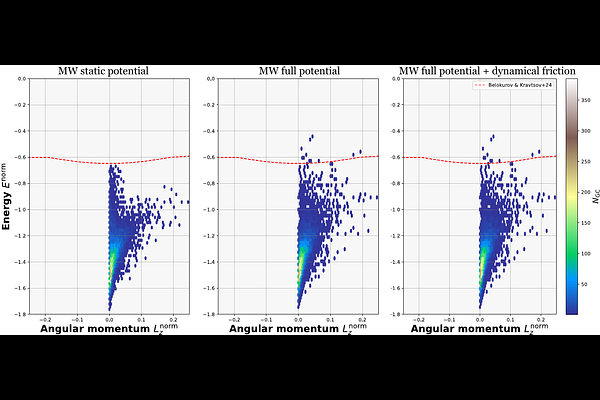A new classification of ex-situ and in-situ Galactic globular clusters based on a method trained on Milky Way analogues in the TNG50 cosmological simulations

A new classification of ex-situ and in-situ Galactic globular clusters based on a method trained on Milky Way analogues in the TNG50 cosmological simulations
Pierre Boldrini, Paola Di Matteo, Chervin Laporte, Oscar Agertz, Sergey Khoperskov, Giulia Pagnini
AbstractWe present a novel method combining existing cosmological simulations and orbital integration to study the hierarchical assembly of globular cluster (GC) populations in the Milky Way (MW). Our method models the growth and evolution of GC populations across various galactic environments as well as the dynamical friction and mass loss experienced by these objects. This allows us to track the trajectory of about 18,000 GCs over cosmic time in 198 MW-like galaxies from TNG50. This cosmological-scale tracking of the dynamics of in-situ and ex-situ GC populations with such a large statistical sample allows us to confirm the presence of an overlap between the two populations in MW-like galaxies, occurring below an energy threshold of $E < 0.7 E_{\rm circ}(r_{\rm hm}^{*})$ where $E_{\rm circ}(r_{\rm hm}^{*})$ is the energy of a circular orbit at the galaxy's stellar half-mass radius $r_{\rm hm}^{*}$. Our results challenge the validity of current classification schemes commonly adopted in the literature, which ultimately fail to provide a clear separation between the two populations. Instead, they tend to isolate only a subset of the ex-situ GCs. More precisely, we argue that it is highly unlikely to find in-situ clusters at $E > 0.7 E_{\rm circ}(r_{\rm hm}^{*})$, and that the real challenge lies in distinguishing the two populations below this energy threshold. In this context, we provide new predictions regarding the origins of the MW GCs observed with Gaia, as well as a comparison with existing literature. Additionally, we highlight that even if ex-situ clusters share a common origin, they inevitably lose their dynamical coherence in the $E$-$L_{z}$ space within MW-like galaxies. We observe a dispersion of GC groups as a function of $E$ and $L_{z}$, primarily driven by the evolution of the galactic potential over time and by dynamical friction, respectively.